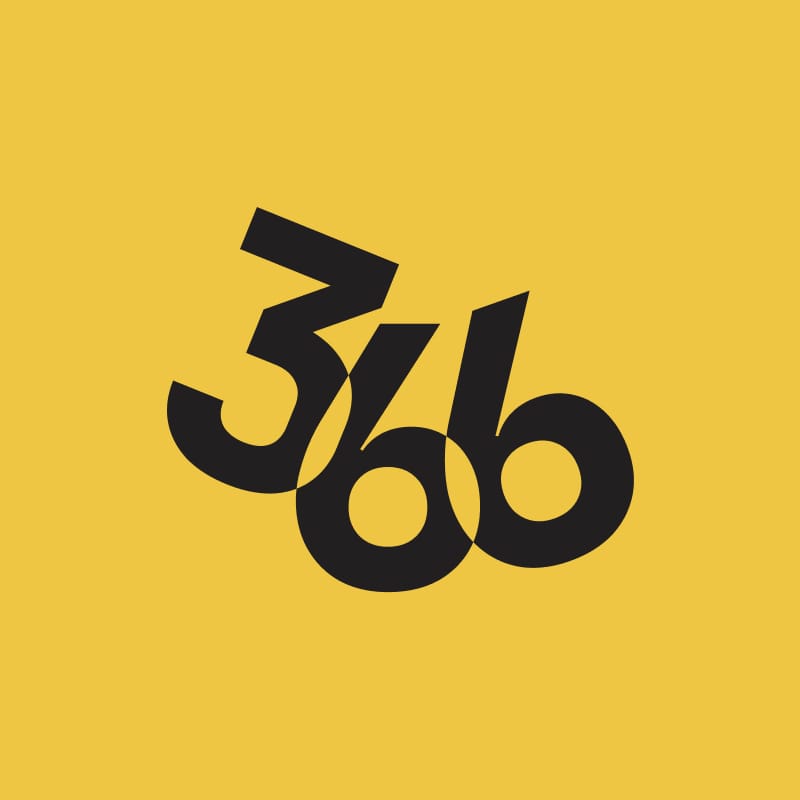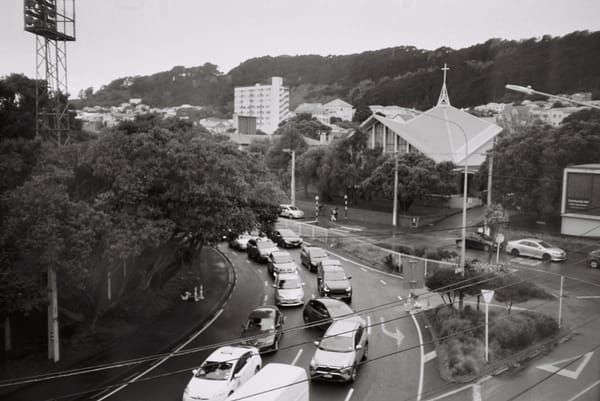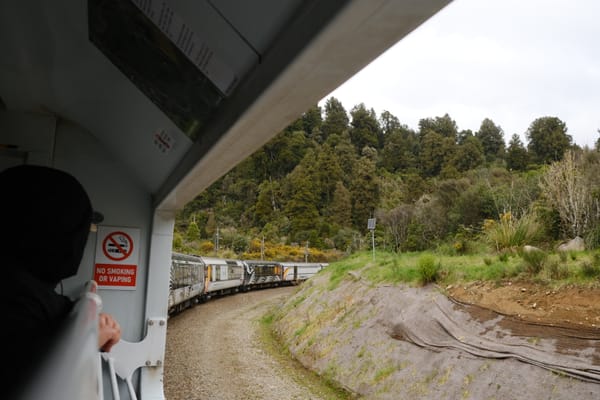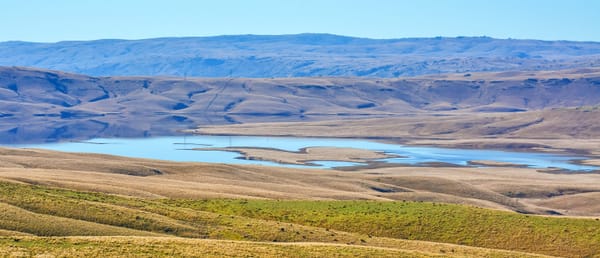Wellington's traffic is bad. The Government just offered a fix?!
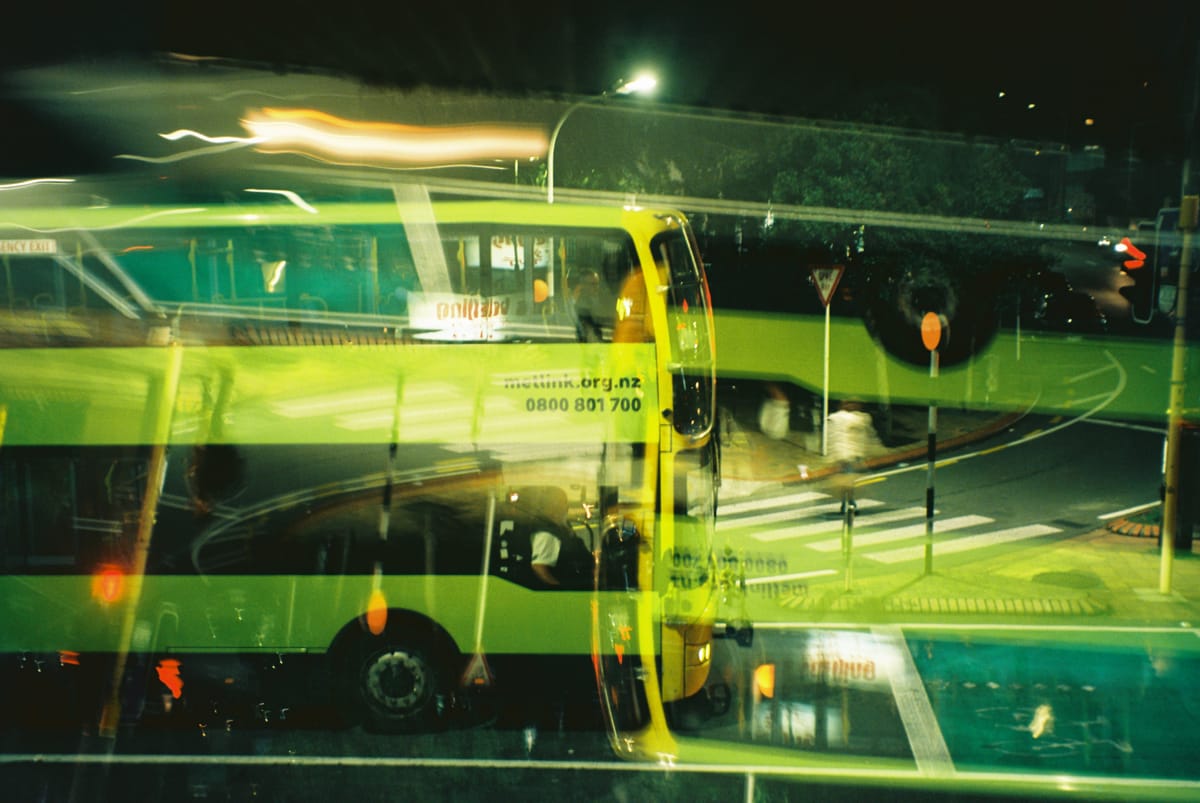
Ever wondered how to fix Wellington’s transport woes? Can we get the buses running on time? Can trains run more frequently?
Can we stop people from sitting in traffic for so long?
We can. The Regional Council has many plans underway to reduce congestion and improve how we get around. One of their plans to cut traffic depends on a law change.
Incredibly, stunningly, fantastically, this Coalition Government is actually going to pass that law.
It’s called congestion charging, and it’s a proven method for getting more people out of cars and onto buses, trains, bikes or footpaths in cities like London.
Let’s explore why we need it to solve climate change, how it works, and what’s possible when it is introduced.
Why is traffic a climate problem?
Traffic is a big problem in Wellington. We’re the second most congested city in Aotearoa behind reigning champion Auckland.
That’s a problem for the climate. Transport produces nearly a fifth of our country’s pollution. In Wellington, it’s responsible for over a third of the region’s pollution.
If Wellington wants to solve climate change, we must stop polluting when we travel. Cutting traffic is crucial because most of our transport pollution comes from cars.
On top of that, cars are a super inefficient way to move 42,000 daily commuters into the CBD. The sheer volume of cars (five Sky Stadiums worth in fact!) are clogging our streets.
I’m not just saying that because I’m an oat flat white sipping vegetarian. This shows up in the statistics. Even though halfof Wellington commuters take public transport, peak hour congestion from cars adds 20 minutes to every half hour of a car trip.
That’s wasted time, wasted resources and more pollution raising temperatures. To solve climate change and save people time, we need fewer cars and all the cars that are left need to be electric.
So, how would congestion charging help?
What is congestion charging?
Congestion charging makes people pay for using roads at rush hour. It’s similar to peak fares on buses and trains. The Government hasn’t given many details yet. However, based on reporting, it could cost as little as $5 per car entering the city.
By adding costs to getting around at rush hour, fewer people will drive to work. Let’s say you live in Kilbirnie and drive into the central city. A congestion charge of $5 is higher than the cost of taking the bus at peak hours ($3.32).
You can live as far out as Waterloo and it will still be cheaper to take the bus or train. That’s before adding the cost of parking and petrol.
If the charge was $18, taking public transport at peak hours would be the cheapest option from anywhere in the Wellington Region.
Congestion charges work. London has seen serious benefits from congestion charging. Traffic reduced by 18%, congestion was cut by 30%, and the number of people taking the bus increased by a third.
When a choice costs money, people reevaluate their way of getting around. Imagine someone living near the Number 2 bus in Lyall Bay. When it costs to drive, the bus running every 10 minutes becomes a more attractive option.
But, that’s only one part of the puzzle. To actually get people to take different transport, we need better services connecting the entire region.
Is our public transport good enough?
Public transport in the Wellington Region can be… spotty. The magic of 10 minute bus timetables in central Wellington isn’t available everywhere. The trains are great, but rely on century-old tech to run. We physically can’t run trains more frequently yet, so train travel is at capacity in rush hour.
Driving cannot be the only reliable option for most people outside the CBD, because the number of people living outside of Wellington’s central city is projected to grow.

To serve those people, we need to improve the trains and buses. The Council doesn’t have enough money to make a world class public transport system right now.
Congestion charging could provide a bit of the money they need. That means it’s easier to buy new trains, build bus lanes, run more buses and make everything work better.
Chair of the Regional Council Daran Ponter wants this to happen:
“Wellington's public transport system is already very well used with bus trips now at all time record highs and - if the funding is available - it is relatively straightforward to scale up capacity and frequency by adding bus and rail services. We can also make public transport more attractive by capping weekly fares in ways that encourage people with longer journeys to take the bus and the train more often.”
This is seriously exciting. Imagine never paying more than $50 a week for transport. That’s a game changer for someone living in Silverstream commuting to town.
Imagine having trains running every ten minutes.
Imagine buses always being on time because they aren’t stuck in traffic.
Congestion charging helps drivers, too. Roads will be emptier for people who still need to use them, like tradies. Everyone benefits when we get more people using buses, bikes, trains and footpaths. Even drivers.
As much as I grumble about the pace of cutting pollution, there are exciting things coming.
This policy won’t be a silver bullet that delivers all my wildest transport dreams. We need more money for that.
But, it sure as shit will help make trains and buses more attractive on a Monday morning.
And I, for one,
